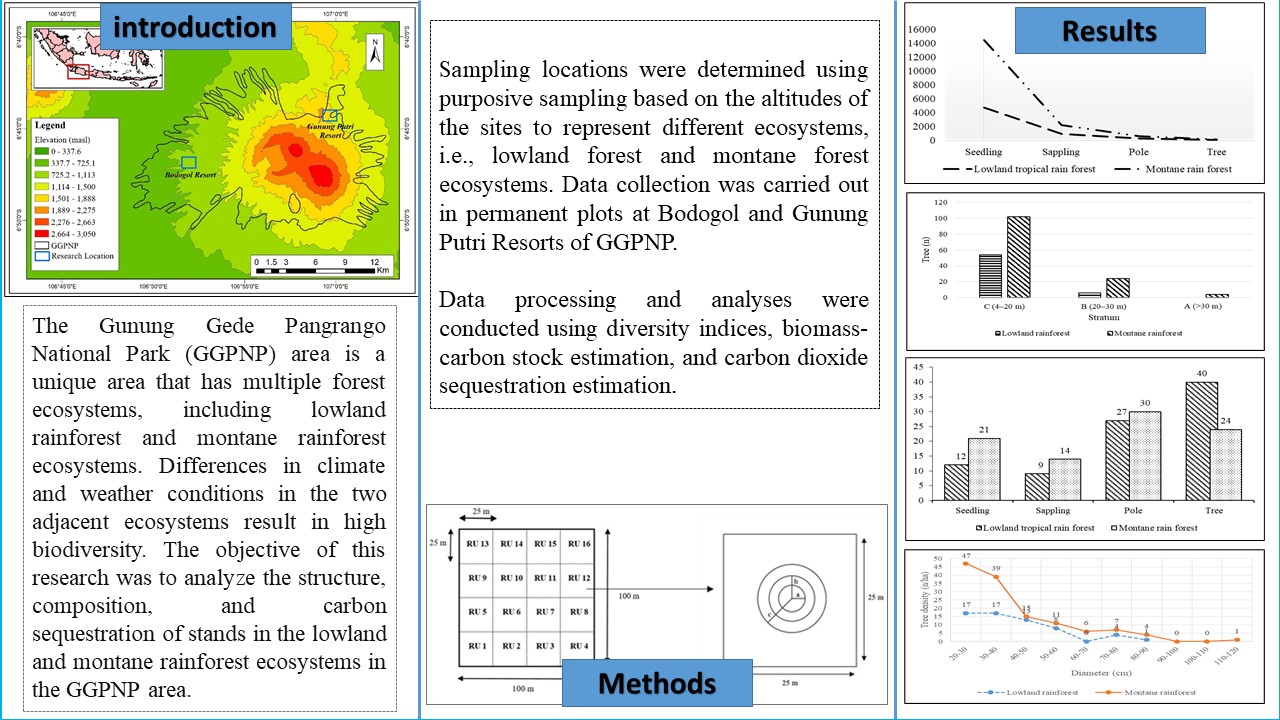Carbon Stored on Seagrass Beds in Gili Maringkik, Lombok, Indonesia
Downloads
Seagrass beds are an important vegetation for reducing the impact of global warming besides the function of forest and mangroves vegetation. The research aims to find the composition of seagrass species, density, seagrass coverage, seagrass standing biomass, seagrass standing carbon and substrate carbon. The research was conducted in Gili Maringkik, Lombok, Indonesia. The research included observation of species composition and the sample was collected from 0.5 ×0.5 m plot area. Total plot area was 25 on five lanes with the space between plots 25 m and between lanes 100 m. The researcher found that there were eight seagrass species (two families, six genera): Cymodocea rotundata, Cymodocea serrulata, Enhalus acoroides, Halodule pinifolia, Halophila minor, Halophila spinulosa, Syringodium isoetifolium and Thalassia hemprichii. Cymodocea rotundata (506.40±187.809 stand.m-2) was the species of highest density and while the species of Thalassia hemprichii (36.52±30.004 %) was the species of highest coverage. Total of seagrass standing biomass in Gili Maringkik was 1081.85 g.DW.m-2 with the carbon stock of seagrass beds was 483.86 g.C.m-2 and substrate carbon content was 0.09%–0.49%. the total carbon stock of seagrass beds in Gili Maringkik has 153.96 ton.C (4.84 ton.C.Ha-1).
Downloads
Copyright (c) 2023 Firman Ali Rahman, Ibnul Qayim, Yusli Wardiatno

This work is licensed under a Creative Commons Attribution-NonCommercial-NoDerivatives 4.0 International License.
Authors who publish with this journal agree with the following terms:
- Authors retain copyright and grant the journal right of first publication, with the work 1 year after publication simultaneously licensed under a Creative Commons attribution-noncommerical-noderivates 4.0 International License that allows others to share, copy and redistribute the work in any medium or format, but only where the use is for non-commercial purposes and an acknowledgement of the work's authorship and initial publication in this journal is mentioned.
- Authors are able to enter into separate, additional contractual arrangements for the non-exclusive distribution of the journal's published version of the work (e.g., post it to an institutional repository or publish it in a book), with an acknowledgement of its initial publication in this journal.
- Authors are permitted and encouraged to post their work online (e.g., in institutional repositories or on their website) prior to and during the submission process, as it can lead to productive exchanges, as well as earlier and greater citation of published work (See The Effect of Open Access).




























